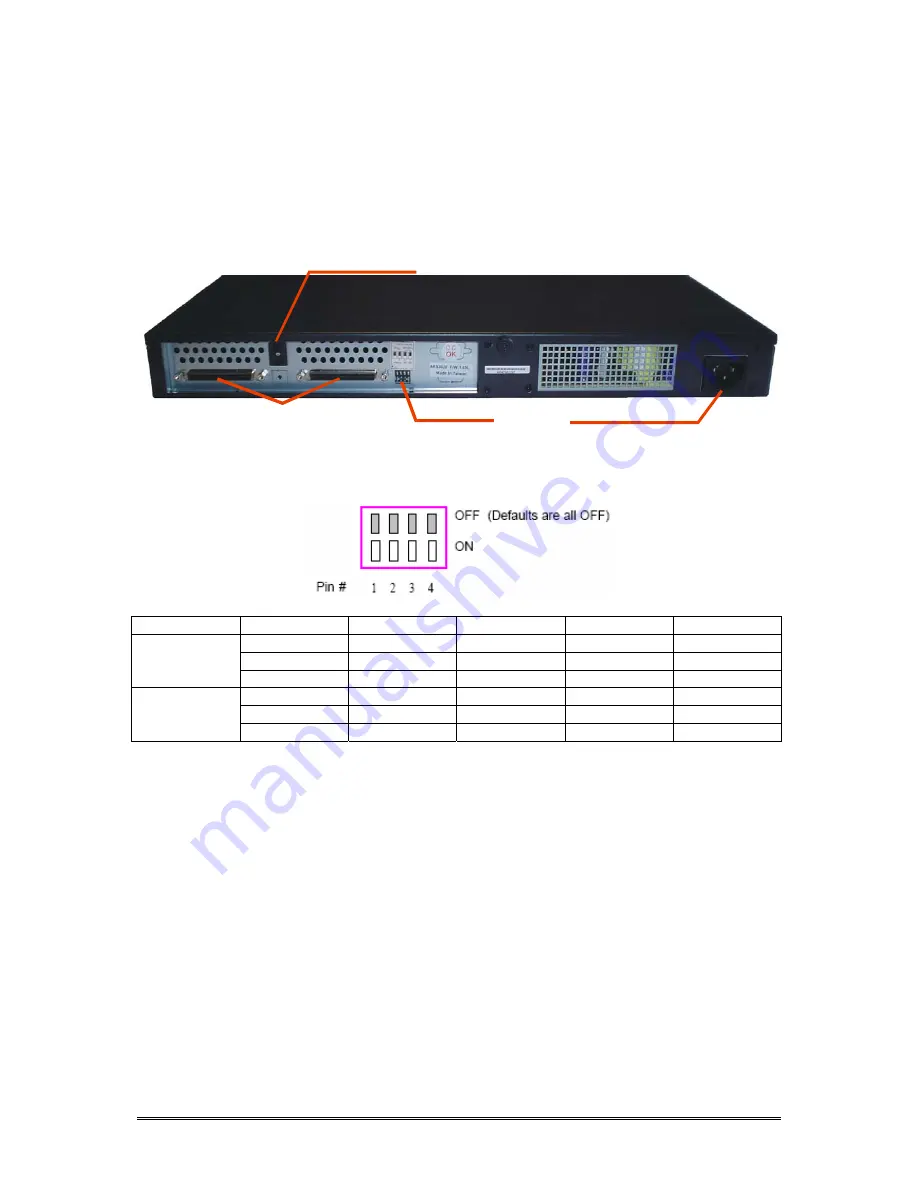
MSKL MS-3020 User Manual
2.2 Set the SCSI ID
On the rear panel of the MS-3020 there is a SCSI ID switch as figure 2-2 shows. Set the SCSI ID by
adjusting the switch up or down. (Don’t set ID 7. It is normally reserved for the SCSI host adapter)
Setting SCSI ID and configuration mode: Be sure that each device has a unique ID number (see 1.6).
No matter how many MS-3020s (up to 15) are installed and connected, the SCSI ID set on every
switch cannot be the same. The selectable number for the MS-3020 is from 0 to 15.
DIP Switch
SCSI ID Switch
Two HD68 SCSI
Connectors
AC Power Connector
Figure 2-2
2.3 Set the Mode
Mode
Transfer Rate
Pin 1
Pin 2
Pin 3
Pin 4
160MB/sec OFF
OFF
OFF
ON
80MB/sec
OFF OFF OFF OFF
JBOD
40MB/sec
OFF OFF ON OFF
160MB/sec OFF
ON
OFF
ON
80MB/sec OFF
ON
OFF
OFF
Normal
40MB/sec OFF
ON
ON
OFF
Table 2-2
1.
Pin 1: Reserved
The default is OFF.
2.
Pin 2: JBOD Mode vs. Normal Mode
The default is JBOD. It combines 2 or more hard disk drives into a big one. The enlarged
capacity is convenient for mass data storage. In Normal mode the SCSI adapter will detect
the hard disk drives you have connected. You need to enable the SCSI adapter’s LUN support.
Take Adaptec AHA-39160 as example. In SCSI Bios under point SCSI options you need to set
the Multiple LUN to the on state so that the computer can detect all hard disk drives.
3.
Pin 3: SCSI Host Transfer Rate at 80MB/s vs. 40MB/s
The default is 80MB/s. If the SCSI adapter is not capable or the signals become unstable after
connecting some MS-3020, lower the speed to 40MB/s.
4.
Pin 4: SCSI Host Transfer Rate at 160MB/s
The default is off, but if pin 4 is adjusted to ON, the highest transfer rate will reach 160MB/s.













